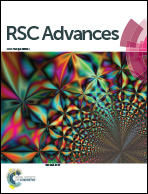Design, synthesis and mechanism of novel shikonin derivatives as potent anticancer agents
Abstract
In this study, a series of novel shikonin derivatives (30–49) were designed and synthesized and their anti-proliferative activities were evaluated against five different cancer cell lines, including HeLa, HepG2, MCF-7, BGC and A549. Some of the compounds show strong anti-proliferative effects against HeLa, HepG2 and MCF-7 with IC50 values ranging from 1.26 to 18.50 μM and show lower side effects towards normal cell lines as compared to shikonin. Compared to other compounds and shikonin itself, compound 40 displayed much stronger anti-proliferative effects against various cancer cell lines. Furthermore, the flow cytometry results demonstrated that compound 40 could obviously induce apoptosis in a dose- and time-dependent manner and also cause cell cycle arrest at the G2/M phase. For further investigation of the aforementioned mechanisms, we performed Western blot experiments and found that the cleavage of PARP and upstream caspase-3 increased; moreover, caspase-9 was activated by cleavage but not caspase-8. These aforementioned results also indicate that compound 40 could induce caspase-9 involved apoptosis and G2/M phase cell cycle arrest via the P21, p-CDC2 (Tyr15) pathway independent of P53.


 Please wait while we load your content...
Please wait while we load your content...